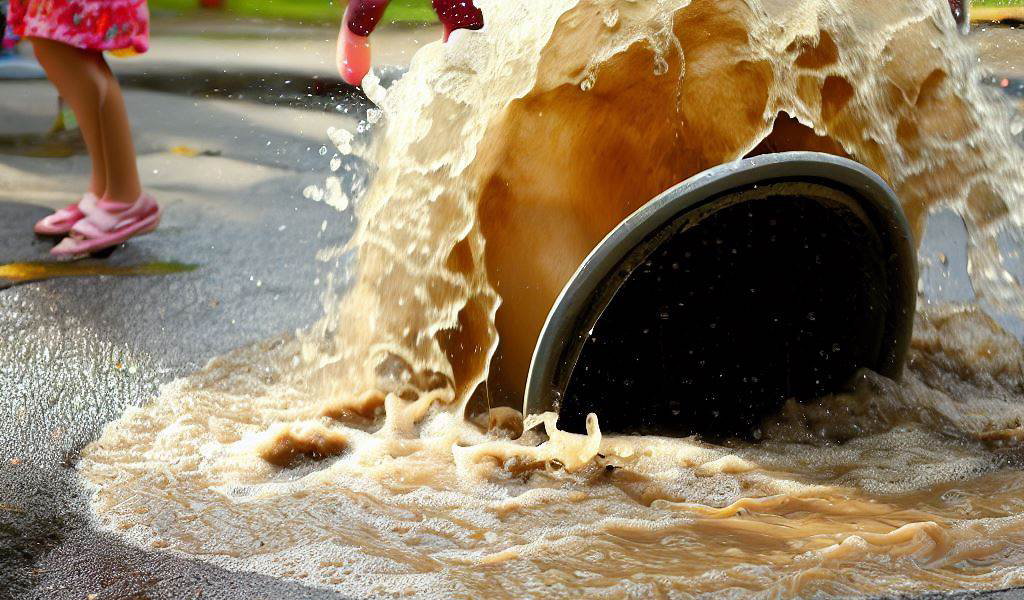Sewer Overflow Challenges: Addressing Early Detection, Inflow and Infiltration, and Clean-Up
Sewer overflows are a significant challenge for cities and towns worldwide. The impact of an overflow can be devastating, leading to public health risks, damage to property, and environmental hazards. The Environmental Protection Agency (EPA) defines sanitary sewer overflows (SSOs) as “the release of untreated sewage from a sanitary sewer system into the environment.” SSOs can happen for various reasons, including heavy rainfall, system failures, and inflow and infiltration (I&I). This article will discuss the challenges of SSOs and the latest innovations and solutions for sewer overflow prevention.

1-Surcharge and overflow early detection and warning
One of the significant challenges of sewer overflows is the lack of early detection and warning systems. Often, overflows occur without warning, and the first indication of a problem may be when raw sewage enters homes or businesses. However, new innovations in wastewater management, such as sewer level monitoring, provide real-time data on the level of wastewater in the system. This technology can alert operators to potential overflows, allowing them to act before a disaster occurs.
2-Knowing when an overflow has occurred
Another significant challenge of sewer overflows is knowing when they happen. In many cases, overflows go undetected until significant damage has occurred. However, new sanitary sewer overflow (SSO) monitoring innovations, such as ssoAlert®, can provide real-time data on overflow events. These systems can detect overflows and send alerts to operators, allowing them to take quick action to prevent further damage.
3-Identify the sources of inflow and infiltration (I&I)
Inflow and infiltration (I&I) are significant contributors to sewer overflows. I&I happens when rainwater and groundwater enter the sewer system through cracks, leaks from stormwater lines, illicit connections, and other defects. Identifying the sources of I&I is critical for reducing the risk of overflows. New innovations in sewer system monitoring can detect and locate I&I sources, allowing operators to make repairs before a problem occurs.
4-Visibility into the sewer system
Having visibility into the sewer system is critical for reducing the risk of sewer overflows. Sewer inspections can identify defects, cracks, and other problems leading to overflows. New innovations in sewer inspections, such as robotic cameras and other technologies, provide operators with real-time data on the condition of the sewer system, allowing them to identify defects in sewer pipes. The ssoAlert system integrates all monitoring locations aiding municipalities in detecting blockages that can result in surcharges and overflows.
5-Clean-up of overflow and reporting to the EPA
In the event of a sewer overflow, cleaning up the affected area and reporting the incident to the EPA is critical. Clean-up and reporting requirements are outlined by Federal and State environmental agencies regarding sanitary sewer overflows. ssoAlert can aid in reporting this information to the environmental authorities and assist in complying with EPA regulations.
Conclusion
Sewer overflows are a significant challenge for cities and towns worldwide. The impact of an overflow can be devastating, leading to public health risks, damage to property, and environmental hazards. However, new innovations in wastewater management and sewer system monitoring, such as ssoAlert by Infratech Inc., provide real-time data and insights into the sewer system, allowing operators to take quick action to minimize overflows incidents. By investing in these new technologies and solutions, cities and towns can reduce the risk of sewer overflows and assist municipalities in complying with the EPA Clean Water Act.
References:
“Sanitary Sewer Overflow (SSO) Control and Wastewater Facilities Plan.” Environmental Protection Agency, 2013, https://www.epa.gov/sites/default/files/2015-09/documents/maywood_sso_plan_508.pdf.
“Sanitary Sewer Overflow.” Environmental Protection Agency, 2022, https://www.epa.gov/npdes/sanitary-sewer-overflow.
